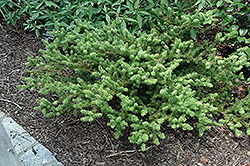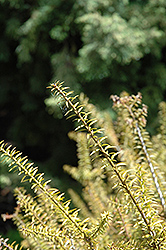Johnson Brothers Plant Finder
Height: 6 feet
Spread: 6 feet
Sunlight:
![]()
Hardiness Zone: 6b
Other Names: Westland Totara
Description:
A hardy, small growing specimen with yew-like needle foliage; can be pruned to form a compact shrub or hedge; adds interesting texture to the garden
Ornamental Features
Needle Leaved Totara has attractive green evergreen foliage which emerges chartreuse in spring on a dwarf conifer with a mounded habit of growth. The small needles are highly ornamental and remain green throughout the winter.
Landscape Attributes
Needle Leaved Totara is a multi-stemmed evergreen shrub with a mounded form. Its relatively fine texture sets it apart from other landscape plants with less refined foliage.
This is a relatively low maintenance shrub, and can be pruned at anytime. It has no significant negative characteristics.
Needle Leaved Totara is recommended for the following landscape applications;
- Mass Planting
- Rock/Alpine Gardens
- General Garden Use
Planting & Growing
Needle Leaved Totara will grow to be about 6 feet tall at maturity, with a spread of 6 feet. It has a low canopy, and is suitable for planting under power lines. It grows at a slow rate, and under ideal conditions can be expected to live for approximately 30 years.
This shrub should only be grown in full sunlight. It does best in average to evenly moist conditions, but will not tolerate standing water. It is not particular as to soil type or pH. It is somewhat tolerant of urban pollution. This species is not originally from North America.


